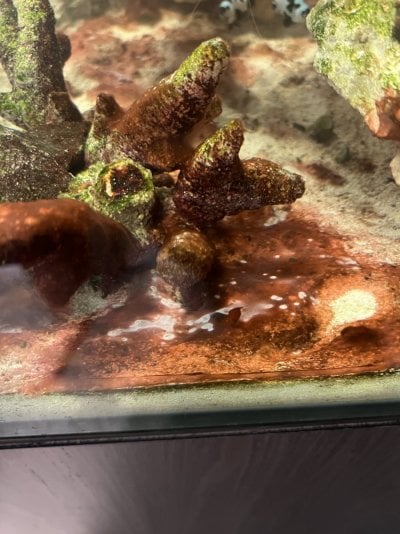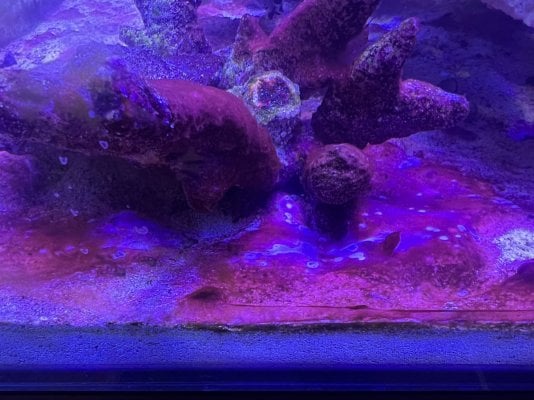Hi all, about 90 days into the hobby, and the tanks life.
Having fun with the Dino’s takeover; approaching it with over feeding and Microbacter7 to help combat. Ordered Dr. Tims solution to help as well.
However, this white/moldy looking stuff as started to appear the morning after a water change. Hoping to get some help on an ID to help figure it out
60G Cube w/ 20g sump skimmer available, but has not been used
2 Clowns
1 Royal Gramma
1 Coral Banded Shrimp
Handful of snails and hermits
0.06ppm Phospates
0.0 ppm Nitrates
1.025 Salinity
76-78° F


Having fun with the Dino’s takeover; approaching it with over feeding and Microbacter7 to help combat. Ordered Dr. Tims solution to help as well.
However, this white/moldy looking stuff as started to appear the morning after a water change. Hoping to get some help on an ID to help figure it out
60G Cube w/ 20g sump skimmer available, but has not been used
2 Clowns
1 Royal Gramma
1 Coral Banded Shrimp
Handful of snails and hermits
0.06ppm Phospates
0.0 ppm Nitrates
1.025 Salinity
76-78° F

















